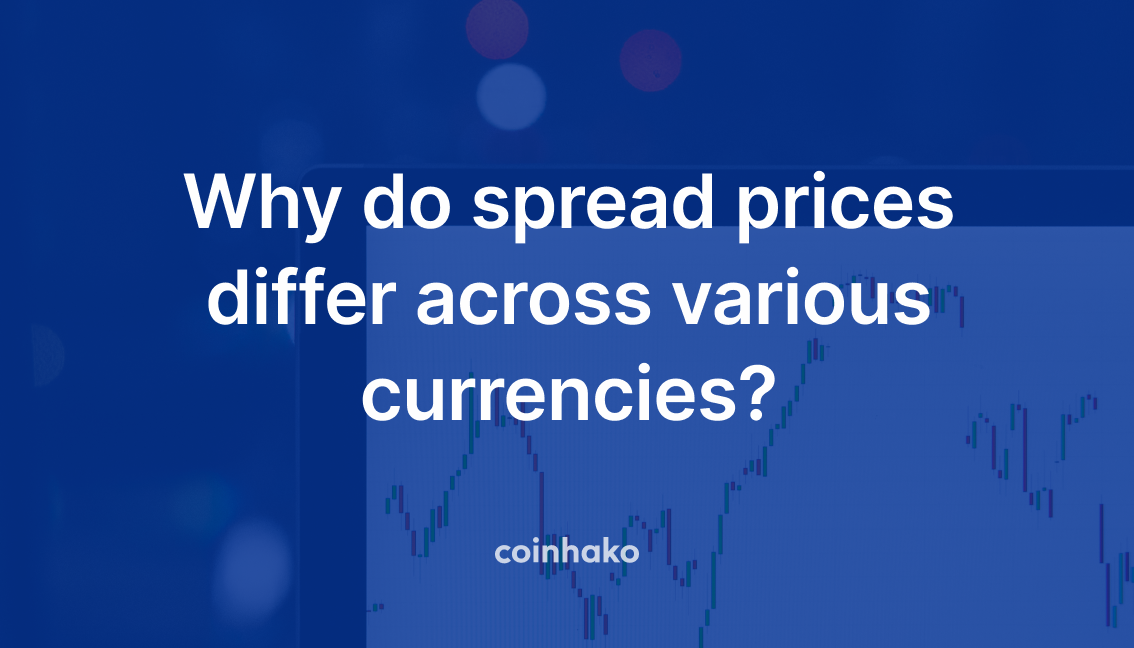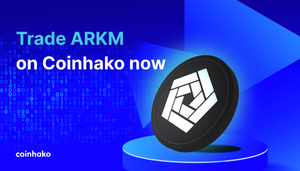Ever wondered why cryptocurrency trades might be priced so differently across platforms, or when with different currencies? Am I paying Coinhako fees with the spreads? It’s really not that complicated.
Here’s a quick overview/explanation for you.
Why are cryptocurrency prices with Asian currencies so different from US Dollar prices?
If you’ve spent long enough on trading platforms and cryptocurrency exchanges, you might have noticed by now that there is a discrepancy in prices. In the case of Coinhako, this might be apparent when you toggle between US Dollars and other currencies that we offer.
One of the key reasons for these differences in pricing is because of something known as SPREADS!
So what are spreads?
A spread is the difference between the bid price and ask price for a trade. In the case of cryptocurrencies, the spread refers to the discrepancy between buy and sell prices quoted for a cryptocurrency.
Fixed & Variable Spreads
The spread of trading pairs is affected by how they are priced. This could come in the form of a fixed or variable spread.
A variable spread is highly dependent on how the market moves. Any major market event, such as changes in interest rates, could result in the adjustment of the spread.
On the other hand, a fixed spread is pre-determined which means that regardless of how good or bad the market conditions are, the costs of transactions will remain the same.
Apart from earning from the spread, brokers can also charge a commission — or do both.
Some brokers may claim to offer commission-free trades, but it is likely that they make a commission by widening the spread on the trades instead.
View how cryptocurrencies are priced on Coinhako
Why are spread prices so different across different currencies?
Back to the earlier point on why USD spreads might look a lot smaller compared to spreads with Asian currencies, it’s because different currencies are affected by a range of macro factors.
First, you’ll need to understand the concept of currency volatility, also known as foreign exchange (FX) volatility — which refers to the unpredictable movements of currency exchange rates in the foreign exchange market.
The reason why USD spreads look smaller when in comparison to spreads in Asian currencies is due to financial products are predominantly priced against the USD. In the case of cryptocurrencies, when a trade is executed against an Asian currency, its value would tend to fluctuate against said currency as well as the USD. Hence why you might experience more price volatility with Asian currency trading pairs.
Another reason for this is that trading companies/platforms spreads act as a safeguard against potential losses that might arise from currency volatility, when providing trading services for their users. To mitigate such potential losses, you will find that spreads for trading products that are priced to the Asian currencies are typically wider relative to USD priced ones.
Why do prices increase more during market volatility?
In the world of finance, the simple explanation would be something known as liquidity risk; this is where assets bears the risk of not being able to trade quickly enough without affecting the prices over a period of time.
Just like any other tradable assets, there is always a finite amount that is in circulation at any one time in the market even for digital assets like cryptocurrencies.
As such, there is always the chance of liquidity drying up in platforms when there is particularly high trading volume, and demand for the asset outweighs the supply. This pushes up the prices, and prices will not be normalized until supply is able to reach closer to an equilibrium with demand.
In the case of cryptocurrencies like Bitcoin, a platform might lack liquidity for Bitcoin during times of high trading volume; this has upward pressure to the pricing of the crypto, which is why you might face really high spreads during these times.
Why do spreads differ across exchanges/brokers/trading platforms?
Because the foreign exchange market is a decentralised one and there is no central entity that determines a “master price”; This leads to many reasons why spreads might differ across exchanges.
It could be a case where the platform factors their fees into the spread when a trade is executed. This affects the chart and a spread that is marked up with a commission will be different from a spread that does not do so; usually non-commission spreads would be a lot tighter than spreads that have a commission baked in.
Some brokers/trading platforms might also filter their prices and not show everything there is. When you see a price, it is in fact the best price of a range of prices for different amounts of currency that is being bidded concurrently.
Even the timezone can affect the spread! Trading platforms also have different liquidity providers, which refers to an individual or institution that sells assets to the platform. These liquidity providers would be the ones to set the prices through their market making operations.
There is a whole other world of technical jargon which we would love to share more about, however for simplicity’s sake, we will not be delving too deep into that side of the financial world.
Are spreads part of Coinhako’s fees?
Hidden fees can be frustrating and confusing, especially if you’re just getting started in the crypto market.
Coinhako does not earn from spreads and our prices are dependent on our liquidity providers. Instead, trades incur a transparent flat fee of 1.00%.
We strongly advise users to build an understanding of the risks of trading and always watch out for spread prices when market volatility is high.
Meanwhile, our USD crypto trading offers tighter spreads for our Singapore users relative to SGD trading, while SGD crypto trading might offer users with a lot more convenience.
Which is more convenient for you? Make a trade at Coinhako!
Risk Warning on Digital Payment Token Services
Hako Technology Pte Ltd ("Coinhako") is licensed to provide digital payment token services under the Payment Services Act 2019 (No. 2 of 2019).
The Monetary Authority of Singapore ("MAS") requires us to provide this risk warning to you as a customer of a digital payment token ("DPT") service provider.
Before you pay your DPT service provider any money or DPT, you should be aware of the following.
- Your DPT service provider is licensed by MAS to provide DPT services. Please note that this does not mean you will be able to recover all the money or DPTs you paid to your DPT service provider if your DPT service provider’s business fails.
- You should not transact in the DPT if you are not familiar with this DPT. This includes how the DPT is created, and how the DPT you intend to transact is transferred or held by your DPT service provider.
- You should be aware that the value of DPTs may fluctuate greatly. You should buy DPTs only if you are prepared to accept the risk of losing all of the money you put into such tokens.
- You should be aware that your DPT service provider, as part of its licence to provide DPT services, may offer services related to DPTs which are promoted as having a stable value, commonly known as “stablecoin”.
Visit: Coinhako.com/risk-disclosure for more information.






